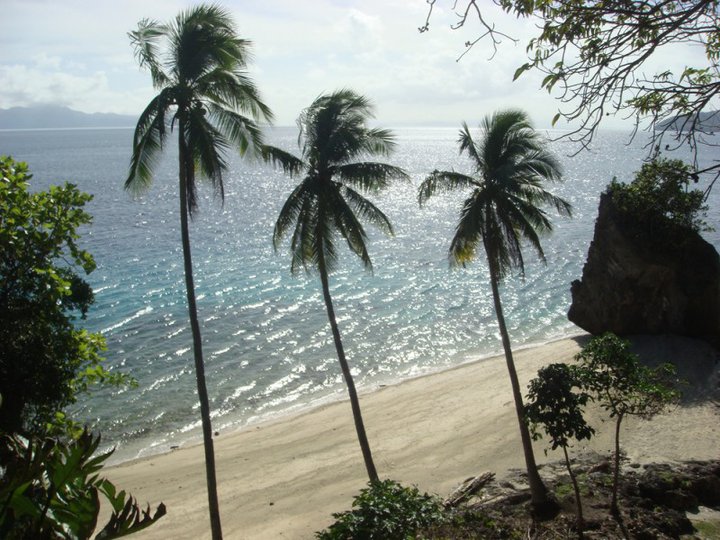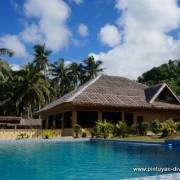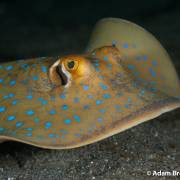Dive in Leyte
Diving in Leyte

Leyte Island is one of the Philippines Visayans Islands groups; where you can expect the diversity of underwater activities. Enjoy snorkeling and scuba diving for all levels of expertise on this Island.
Leyte has long and intact coral reefs and beautiful drop offs. Its dive site is home to many kinds of aqua life from tiny pygmy seahorses, nudibranchs and pipefish to turtles, frogfish, and napoleon wrasse. It is a great spot for whale shark watching these huge animals visit the area every spring.
Leyte Island became one of the most visited diving destinations in Philippines because of the extraordinary marine wonders found under the sea. Its dive sites are home to a mixture of beautiful hard and soft corals that are great haven to many kinds of underwater creatures from pygmy seahorses to giant whale sharks! Diving and whale shark watching trips can be arranged to visit these beautiful areas and its beautiful dive sites. At the very tip of southern Leyte you can find some interesting dive sites with soft corals, sponges and anemones covering its sharp slope.
Dive sites can be accessed by boat to dive some varied reefs and underwater walls, As for snorkelers there are some shallower coral gardens. These intermediate and easy dive sites are home to lots of nudibranchs and some bigger marine lives like green turtles, batfish, eagle rays, and grouper as well as a diversity of corals at depth of 144 feet (44 meters), gorgonians, tables, brains, sea whips, barrels, and sponges galore.
Limasawa Island is a very popular destination at the south of Leyte Island with dive sites varying from easy, intermediate and experienced levels. The area has amazing drop-offs, deep canyons, and a variant of corals and fish. The current is strong here and you can see gorgonians and black and soft coral everywhere.
Diving around Sogod Bay offers some quite attractive dive sites at a depth ranging from 49 to 164 feet (15 to 50 meters). This area is well known for having whale sharks migrations going thought it; you can see whale sharks from the month of November until the end of May. Other beautiful creatures can be seen in here like manta rays and several species of sharks as well as whales and dolphins.
Napantaw fish sanctuary is a great home to huge gorgonian, black, and soft corals along with other species like batfish, grouper, sweetlips, turtles and barracudas. You can dive through the caves at 131 feet (40 meters) deep.

Travel to Leyte

Leyte is among the country’s most historic provinces, proud of its rich and significant past. It was the site not only of a major uprising against the Spaniards but also of the famous landing of US forces during World War II, marking its place in history as the point of entry for the American forces of liberation. This historical consciousness is reflected on Leyte’s provincial seal. The stars symbolize the 49 towns of the province. The alphabet on the cross indicates its second phase of development, when Magellan passed through the province en route to Cebu. And the upper portion commemorates the landing of General Douglas MacArthur, through a perspective of the National Freedom Park.
Leyte is traversed by many low mountain ranges just like the Samar and Visayan islands. From the northwestern section to the southeastern extremities extends a very rugged, almost impassable ridge. There are also many extinct volcanoes, the most important of which is Mahagnao.
Its capital city, Tacloban, is the most important seaport on the eastern coast while Ormoc City is the primary outlet on the western coast. Filipinos stake a large claim on hospitality, just sort of making it a national treasure, and the Leyteños from the small province of Southern Leyte are no different. There is a warmth that begins with the lilt and caress of welcoming voices. Most of the locals, you see, speak Cebuano, a dialect that seems naturally nurturing. Even the land is naturally welcoming, as evidenced by the lights that beckon from homes that hug the coast and the waving fronds of coconut palms.
Southern Leyte may be reached by land via the Pan Philippine Highway or, as most prefer, by sea. Either way, one finds oneself in Maasin, the provincial capital. Maasin is hardly your idea of a bustling town; it has maintained a pace that is welcome after the hurly-burly of city life. It is also blessedly situated between sea and forest. The former provides virtually untouched beaches waiting to be discovered, and the latter, virgin growth still unexplored.
























